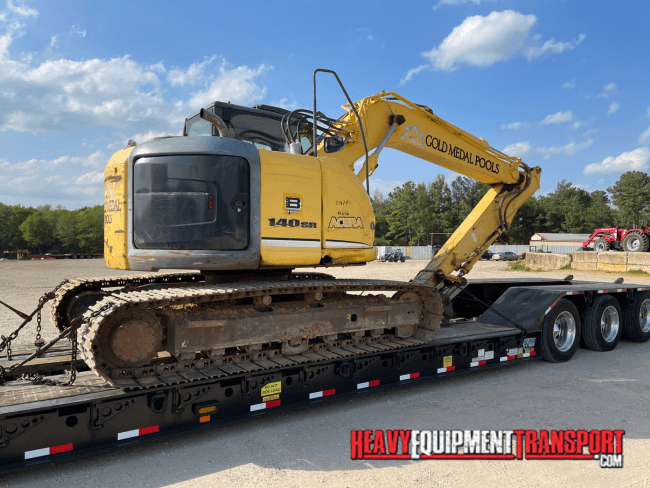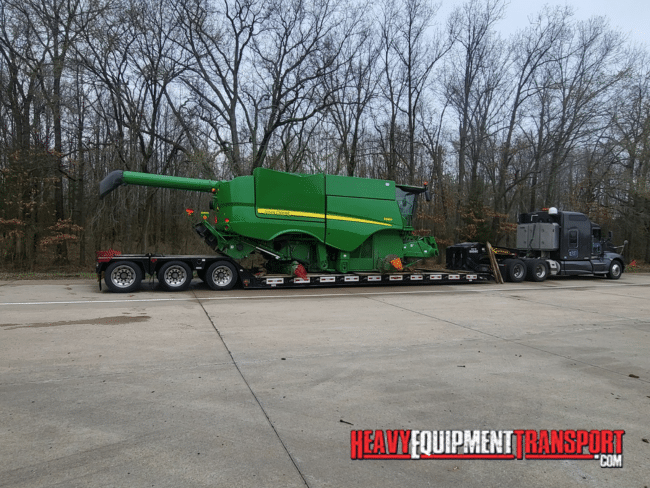Why Do Transport Regulations Vary?

Francisca Olive / July 2023
Heavy haul trucking requires special documentation and permits, which vary from state to state. Breaking transport regulations and rules can result in significant penalties and fines. Operators and fleet managers need to understand the specific transport requirements of each state before sending drivers out on the road. This blog discusses common heavy haul transport regulations and existing variations between states.
What Is Considered a Heavy Haul?
Any load beyond the regulated legal limit on most roads is considered a heavy load. Although numbers vary from state to state, anything weighing over 80 000 pounds in gross weight or exceeding a loaded dimension of 13.6 in height, 8.6 feet in width, and longer than 53 feet is generally categorized as heavy load.

Transport Your Equipment Today
Heavy Equipment Transport is always available for a quote. Fill out the form or give us a call now! (888) 730-2951
What Is Considered a Heavy Haul?
Any load beyond the regulated legal limit on most roads is considered a heavy load. Although numbers vary from state to state, anything weighing over 80 000 pounds in gross weight or exceeding a loaded dimension of 13.6 in height, 8.6 feet in width, and longer than 53 feet is generally categorized as heavy load.
5 Common Transport Regulations and Their Variations
Some of the common variations in heavy haul transportation regulations to be aware of include the following:
➤ Axle Restriction
The axle in a heavy haul trucking trailer determines your legal load capacity. Both federal and state laws determine weight limits for oversize loads based on the number and type of axles and the type of road you use. Generally, heavy hauling equipment is available in 5, 6, 7, 9, 10, 13, and 20 axle options, and the more axles, the more weight you can legally haul. Generally, per axle limit varies by state and road type. However, the following are some general guidelines based on overall federal restrictions:
Steer axles: Steer axles are the first axles on the truck. Federal laws impose a weight limit of 12,000 lbs.
Single axles: Under federal law, a truck with a lone axle can only support 20,000 lbs.
Drive axles: Drive axles on a tractor or fitted to the rear of a heavy-duty trucker can legally support 34,000 lbs. However, the truck must be in a tandem setup.
Tandem axles: Tandem axles are where two sets of wheels are positioned within five feet of each other. Under federal law, tandem axles can support a maximum of 34,000 lbs.
➤ Maximum Legal Dimensions
Maximum legal dimensions of loads vary from state to state. However, any vehicle and load exceeding one or more legal dimensions mentioned above requires a permit. The permit details the following:
- Size and weight of the load
- Nature of the load
- The origin of the load
- The destination of the haul
➤ Permit Requirements
Each state requires a permit to move heavy loads. State permits vary based on local terrain, population density, state laws, and environmental concerns. In most states, permits are issued on a one-off basis for a specific load and journey to be undertaken at a specific time. State permit requirements may include restrictions on the following:
● Movement times
● Routing
● Support equipment
● Weekend and holiday movement
● Winter travel regulations ( most Northern States have regulations around winter)
Permit fees also vary from state to state and are determined by the nature of the load. While some state charges as little as $15.00, others charge more than $70 for the same basic load. You may also be required to pay an additional processing fee of $15.00.

➤ Running Times
Permitted travel times for heavy hauls vary widely between states and in cities or communities within a state. Most states restrict movements of oversized hauls to daylight hours. The restrictions could also vary based on the size of the oversized load. For example:
● Loads exceeding 10 feet wide are restricted to daylight hours
● Oversized loads of more than 10 ft. wide move at night on interstates and 4-lane divided highways
● In some states, the movement of wide loads is restricted to night during periods of least traffic
➤ Other Requirements
Most permits for heavy hauls carry additional requirements to guarantee safety. These requirements vary from one state to another and may include the following:
Guide cars: Most states require wide laws to be accompanied by pilot vehicles known as escorts or guide cars. These vehicles help manage traffic surrounding wide loads, especially on highways and populated areas.
Banners: Most states require conspicuous “Oversized Load” or “Wide Load” banners to be installed at the front and rear of the rig to help identify heavy loads to other road users.
Lights: Flashing yellow or rotating yellow lights is another permit requirement most states impose. These lights signal to other road users that an oversized or overweight load is traveling at a slower pace than other vehicles on the road.
Safety flags: Heavy load operators are required to install vivid orange or red flags at the four corners of loaded haulers carrying oversized loads. This help marks the vehicle’s extremities when moving.
Key Takeaway
If you are moving a shipment across state lines, know that regulations vary from state to state. You must review permit requirements for each state to understand and comply with each set of regulations fully. Penalties for non-adherence attract significant fines that eat into your bottom line.

William Thomas
Heavy Transport Specialist
Being able to lead a team of such talented logistics agents has been a wonderful experience over the past ten years. If you would like to know anything more about the heavy equipment transport services we offer, don't hesitate to give us a call!